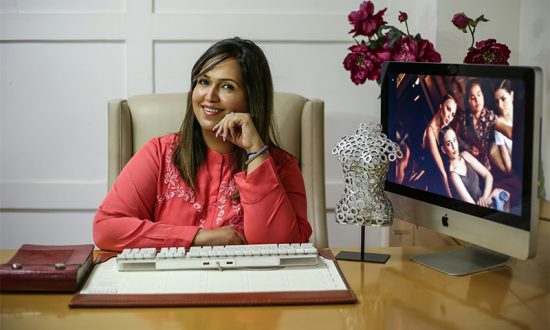Neetu Pavan Manikatalia is a qualified professional who started her legacy 2 decades back by being the first lady in Jharkhand, Bihar to start fashion education at the age of 21. With the vision of taking education and fashion to a higher platform, she has created an education system which is not just unique but divergent in various aspects. Her address to the fashion scene is intelligent and studied, yet imaginative and inspired. Her mantra of living a successful life is hard work and be rooted. Believing in uplifting arty expression and proficient exchange of encounters, boost creation and novelty within the industry and enable trends to shine forth, she started Fashionista school. Today, the AICTE approved, skilled knowledge provider is a member of CII as well as IID and aims for students to develop into professionals with immense calibre who can carve a niche for themselves in the industry. Its vision is not only limited to incubating raw talent but also believes in frosting them and giving them a taste of the real world.
The changing technologies have changed the way we live. The constant development of technology has inspired us to move the fashion industry into an innovative and artistic era. The refined and shooting manufacturing processes provide designers with endless opportunities. The ever-increasing digital world opens up new opportunities, both in the creative process and the way we communicate with and unearth fashion. Technology has enabled us to avail incredible products by using the expertise of manufacturers, designers and other creative people. When it comes to education in the fashion industry then the main trend is Fashion Tech education. The learning process in this regard needs to be continual so as to support and increase the right use of digital education with innovation. Education is the foremost priority for everyone like never before.
Technologies have made way in almost every possible aspects of life including the way we buy products, retail shops, and through social media apps in both B2B and B2C platforms. Brands are preferring to be updated and improvised so as to get their products in front of their customer. Creating a new and exclusive experience can set a seller apart from the rest in an over catered fashion world.
There is a great trend towards using technologies to create a favourable and unique customer experience with brands and companies extending their feet in varied areas of the fashion fraternity. We are witnessing a real concern in the retail sector of the fashion industry to make the shopping experience more interesting, friendly and exciting for the customers. With updation and refinements in the processes of manufacturing, there are burgeoning new fibres and blends to create a variety of product offerings. The exciting new products are the result of collaboration by utilising the skills of different industries to create something efficient and innovative. With the continuous stream of new and exciting technology advancement, the fashion industry is moving towards the future, yet these endless possibilities have more path to cover.
Mobile and e-commerce technologies brought about the first wave of transformations for the fashion industry. Now, we can look ahead to the next possibilities for retail, more specifically virtual reality technology. Virtual reality is another technology that is making headway in the mainstream. Just wearing a headset, consumers can be completely engrossed in an alternate reality, adding a depth of experience to a brand or product. Speed and transparency is another aspect of fashion brands improving through technology. One day delivery times and the see now buy now and fashion show concept are proof of the faster service for the consumer and customer orientation. The expectation of transparency around supply chains and labour conditions are crucial to the consumer in order to decide if the brand fits their personal parameters. Brands today need to divulge their brand culture in a way that is fair, transparent and appealing to their customer.
The incorporation of technology into sportswear is making life easier for many of us. Distance covered, measuring heart rate, breathing depth etc are some of the fitness tracking technology and using these analytics can give workout suggestions to the wearer. A company has released a workout shirt with silver thread woven into the garment combined with sensors that relay information including breath depth, heart rate and movement, as well as the relationship between these and how to improve your workout.
Machine learning has been used by a number of fashion brands to forecast and upgrade the search functionality on their sites. Whether this intelligence is built in-house or facilitated by a third-party, it requires training algorithms to predict shopper behaviour with a high level of efficiency based on its understanding of a set of largely consistent and recurring parameters. As a number of sites focus on customer orientation and trying to be extremely efficient in delivering products, suggesting proper alternatives, and improving the overall shopping experience, customers have almost started to expect this to be the default setting.






